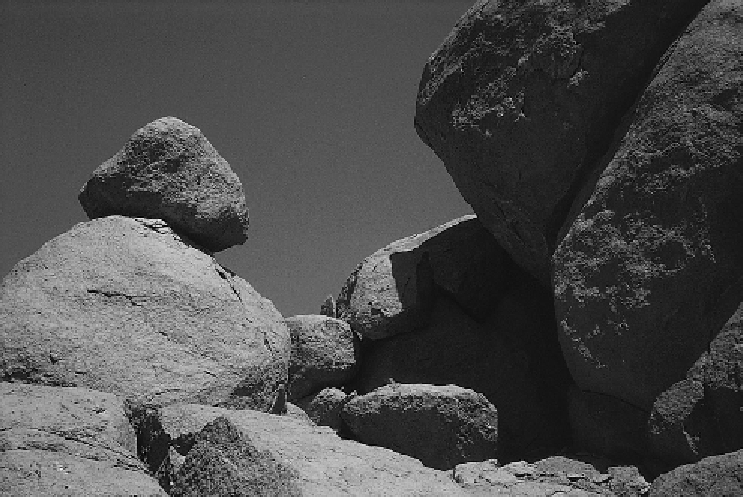Geoscience Reference
In-Depth Information
Figure 18.4. Granite boulders exhumed from a deep weathering profile, Adrar Bous,
south-central Sahara.
weathering front (
Figure 18.4
), became the geomorphic norm of the later Cenozoic
(Dresch,
1959
; Thorp,
1969
; Williams,
1971
). There seems little doubt that Neogene
tectonic movements performed a dominant role in the initial pulse of erosion, but the
Quaternary climatic oscillations became increasingly important erosional pacemakers
thereafter (Williams et al.,
1987
).
The sandy colluvial-alluvial debris eroded from the Saharan uplands was carried
away from the mountains by the Neogene and Early Quaternary rivers to be in part
deposited in late Cenozoic marine deltas such as those of the Nile, the Niger and the
Senegal. However, a considerable proportion of the sediment began to accumulate in
the closed interior basins created during the course of late Mesozoic and Cenozoic
faulting, rifting and epeirogenic movements. It was the unconsolidated Neogene
sediments laid down in large subsiding sedimentary basins, such as the Kufra-Sirte
Basin in Libya and the Chad Basin, which provided the source material for the
late Pliocene and Quaternary desert dunes (
Chapter 8
). Miocene tectonic uplift in
East Africa may have contributed to the desiccation in this region from about 8 Ma
onwards (Sepulchre et al.,
2006
). In the Chad Basin, Servant (
1973
) identified wind-
blown sands in a number of very late Cenozoic stratigraphic sections. He concluded
that the onset of aridity and the first appearance of desert dunes in this part of the
southern Sahara was a late Tertiary (i.e., pre-Quaternary) phenomenon. Using fossil
and sedimentary evidence, Schuster et al. (
2006
) have since demonstrated that the

